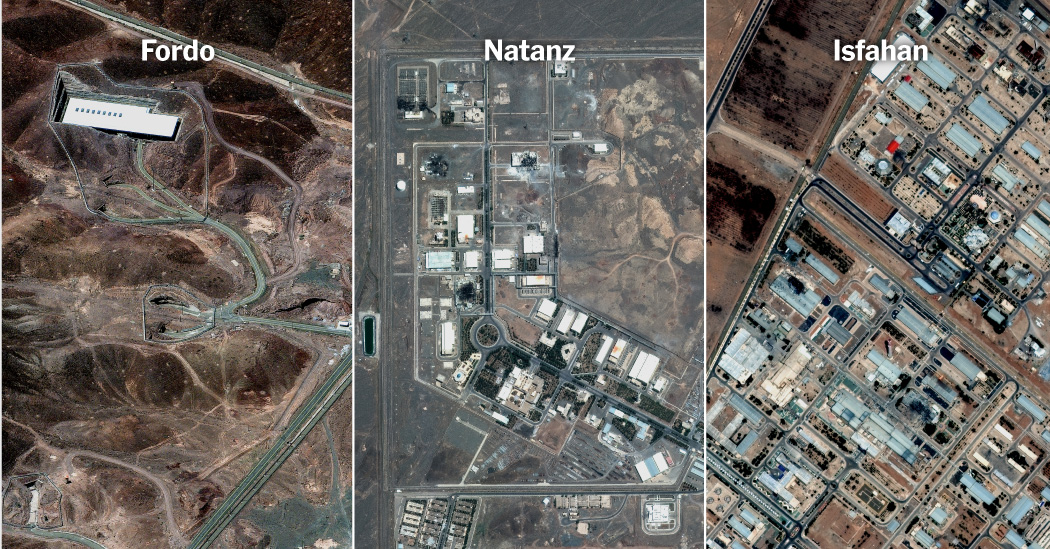The U.S. struck three key nuclear sites in Iran overnight on Saturday, joining Israel’s war against Iran and potentially triggering a more dangerous phase in the conflict.
A U.S. official said that six American warplanes dropped a dozen 30,000-pound bunker-busters on the Fordo nuclear site, and that Navy submarines fired 30 cruise missiles at the Natanz and Isfahan sites. One B-2 bomber also dropped two bunker-busters on Natanz, the official said.
President Trump claimed in an address shortly after the strikes that Iran’s nuclear sites had been “completely and totally obliterated.” The Atomic Energy Organization of Iran confirmed that the three sites had been attacked, and it said that it would take legal action against the U.S in international courts.
These are the nuclear facilities that the U.S. hit.
Fordo
Fordo is Iran’s most critical nuclear enrichment facility, housed deep inside a mountain to shield it from attacks. Only the U.S. military possesses bombs that could hit the site, and multiple bombs would need to be dropped on the same location to reach the facility.
A U.S. official said that initial damage assessments indicated that the facility had been “taken off the table.”
An Iranian lawmaker said in a post on social media that the site had been evacuated “a long time ago” in anticipation of attacks.
Natanz
Natanz is the site of Iran’s largest uranium enrichment center and has been damaged in multiple strikes by the Israeli military.
Damage from previous Israeli strikes
Above-ground facilities at Natanz were damaged on the first day of Israel’s strikes. The International Atomic Energy Agency said on Monday that the electrical infrastructure at the plant had been destroyed by Israeli strikes, and that the loss of power may have also damaged the centrifuges at the site.
Isfahan
Near-bomb-grade nuclear fuel is thought to be stored at a complex outside the ancient capital of Isfahan. International inspectors viewed the supplies of fuel as recently as two weeks ago, though it was unclear whether Iran had moved those supplies in recent days, as some Iranian officials suggested.
If the site is destroyed, it could delay the Iranian nuclear program by years, unless undetected parallel facilities exist.
The Israeli military had previously struck laboratories at the facility that work to convert uranium gas into the form that would be needed to actually produce a weapon. Israeli fighter jets had struck the facility again prior to the U.S. bombing, according to the Israeli military and a state-affiliated Iranian news agency.
Damage from previous Israeli strikes
